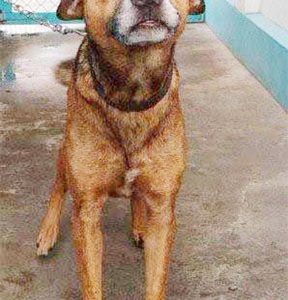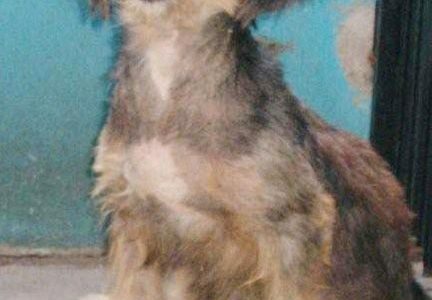
Ailments of the salivary glands
Continued from last week Cysts Salivary gland cysts are characterized by an accumulation of thick, sticky saliva because of a blocked-up duct (canal through which the saliva travels to the mouth).

Continued from last week Cysts Salivary gland cysts are characterized by an accumulation of thick, sticky saliva because of a blocked-up duct (canal through which the saliva travels to the mouth).

Continued Dry mouth Last week, we described the condition of the increased production of saliva (hypersalivation or Ptyalism) which was characterized by profuse drivelling and drooling.

The parotid gland In dogs, there are four main pairs of salivary glands.

Tonsillitis Continued Symptoms Last week, I mentioned the type of tissue that makes up the tonsils.

Continued Tonsillitis Let us first understand what tonsils are. You may have had a nail pierce your sole, and the result of that is a swelling in the inguinal area (the ‘groin’ as we call it).

Laryngitis Continued Last week, we explained what laryngitis is and what the possible causes might be.

Continued Laryngitis The larynx is the organ (really a cavity) in the upper part of the windpipe (trachea) which has cartilaginous walls, and which when moved by associated muscles will vary the tension of the vocal cords, and hence the quality of the sound produced.

ContinuedLast year on December 13, 2009, we discussed the various possible causes of pharyngitis (the consequence of infectious diseases, inflammation of nearby tissues, extension of a rhinitis, air pollutants, unskilled administration of oral medicine, the eating of hot food, genetic defects, etc).

As you read this, the New Year is just around the proverbial corner.

It’s Christmas time, the season of goodwill and reflection, so we’ll take time off from the more stodgy issues of diseases and their cures.
Pet CornerContinued Bad breath Let us turn today to a problem which I had promised to address some time ago – bad breath (halitosis) in dogs, and the supposed cures associated with this problem.

ContinuedNutrition and dental health Last week, we spent some time discussing the cleaning (brushing) of dogs’ teeth.

Having discussed all the various tooth and gum ailments over the past weeks, we must now logically turn to the prevention aspect.

Oral ailments ContinuedPeriodontitis Let me fulfil my promise to continue with the symptoms and treatment of the disease, periodontitis.

– continued A colleague who reads these articles (Glory be!) commented that I should mention that some dogs have a genetic predisposition to have more (or less) teeth in their mouths.

Pet Corner – continued Over the past few weeks, I have been making references to the malformation of the jaws which result in an incongruence of the teeth in the upper and lower jaws, simply put: an incorrect bite.

You may recall that last week we decided to deal with that which is normal before embarking on the pathological.

Tongue problems Pet CornerParalysis of the tongue In all my years of practice, I can only recall seeing this condition once.

Enlarged gums ContinuedPet Corner Last week we placed focus on sore gums (gingivitis).

Gingivitis (Sore gums) Continued Last week, it was promised that we would continue our discussion on gingivitis (sore gums) with the treatment of this ailment.
The ePaper edition, on the Web & in stores for Android, iPhone & iPad.
Included free with your web subscription. Learn more.